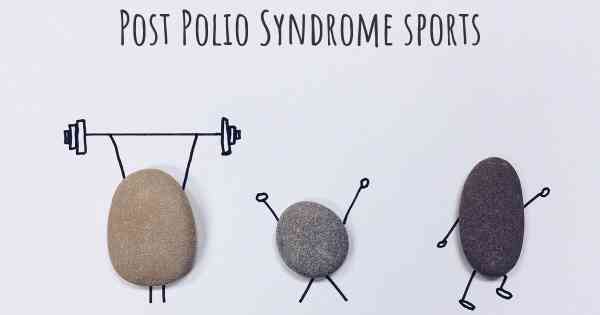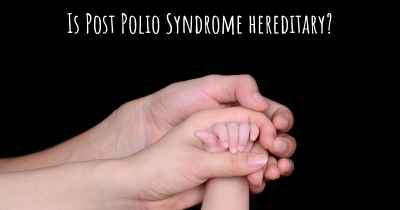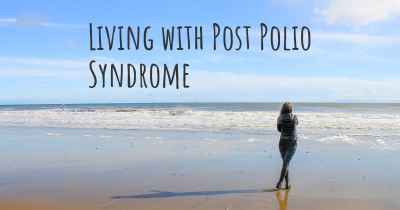Is it advisable to do exercise when affected by Post Polio Syndrome? Which activities would you suggest and how intense should they be?
See if it is advisable for people with Post Polio Syndrome to practice sports and which ones are the most recommended if you have Post Polio Syndrome

Exercise Recommendations for Post Polio Syndrome
Post Polio Syndrome (PPS) is a condition that affects individuals who have previously had polio. It is characterized by new muscle weakness, fatigue, and pain that can significantly impact daily life. While exercise can be beneficial for overall health and well-being, it is important to approach it with caution when dealing with PPS.
Consult with a healthcare professional: Before starting any exercise program, it is crucial to consult with a healthcare professional who is familiar with PPS. They can assess your specific condition, provide personalized recommendations, and ensure that exercise is safe for you.
Low-impact aerobic exercises: Engaging in low-impact aerobic exercises can help improve cardiovascular fitness and overall endurance without putting excessive strain on weakened muscles. Walking, swimming, stationary cycling, and water aerobics are excellent options. Start with shorter durations and gradually increase as tolerated.
Strength training: Strengthening exercises can help maintain muscle strength and function. However, it is important to use light weights or resistance bands and focus on higher repetitions rather than heavy lifting. This approach minimizes the risk of overexertion and muscle strain. Working with a physical therapist can be beneficial to develop a safe and effective strength training program.
Flexibility exercises: Stretching exercises can help improve flexibility, reduce muscle stiffness, and enhance range of motion. Gentle stretching of major muscle groups should be performed regularly, but it is essential to avoid overstretching or bouncing movements that can lead to injury.
Balance and coordination exercises: PPS can affect balance and coordination, increasing the risk of falls. Incorporating exercises that focus on balance, such as standing on one leg or using a balance board, can help improve stability and reduce the likelihood of accidents. It is crucial to perform these exercises with proper support and supervision.
Listen to your body: Pay close attention to your body's signals during exercise. If you experience excessive fatigue, increased pain, or any other discomfort, it is important to rest and modify your activities accordingly. Pushing through pain or overexerting yourself can worsen symptoms and lead to injury.
Gradual progression: Start with shorter durations and lower intensities, gradually increasing as your tolerance improves. It is essential to pace yourself and avoid pushing too hard too soon. A gradual approach allows your body to adapt and minimize the risk of exacerbating symptoms.
Rest and recovery: Rest is an integral part of any exercise program, especially for individuals with PPS. Allow for adequate rest and recovery periods between exercise sessions to prevent overuse injuries and manage fatigue.
Regular monitoring: Regularly monitor your symptoms and progress. Keep track of any changes or worsening of symptoms and discuss them with your healthcare professional. They can provide guidance and make necessary adjustments to your exercise routine.
Conclusion: Exercise can be beneficial for individuals with Post Polio Syndrome, but it is crucial to approach it with caution and under the guidance of a healthcare professional. Low-impact aerobic exercises, strength training, flexibility exercises, balance and coordination exercises, along with listening to your body, gradual progression, rest, and regular monitoring are key components of a safe and effective exercise program for individuals with PPS.
Posted Aug 22, 2017 by Richard 700
Posted Jul 20, 2019 by Terry 3000
Isometric exercises can be a great help both in stabilization and in the back pain, improving even more if it is accompanied by electro soft (always without causing muscle fatigue and excessive tiredness).
The strength exercises with ranges of motion complete (intensity progressively, always starting with autocargas and not with weights or external) that will help us to maintain a good quality of life, and will prevent you loosing mobility in the extremities.
If these exercises are done in a group, they will improve the inclusion of the affected, in addition to take advantage of all the characteristics of the physical activity such as the release of endorphins (the feeling of well-being), improve the quality of life (through improved strength and endurance), improved self-perception, etc
We recommend likewise to work doing focus on the areas most weakened to reduce the extent of the possible asymmetry of the body.
Posted Nov 14, 2017 by Mariana Morales Rodriguez-Parets 100








